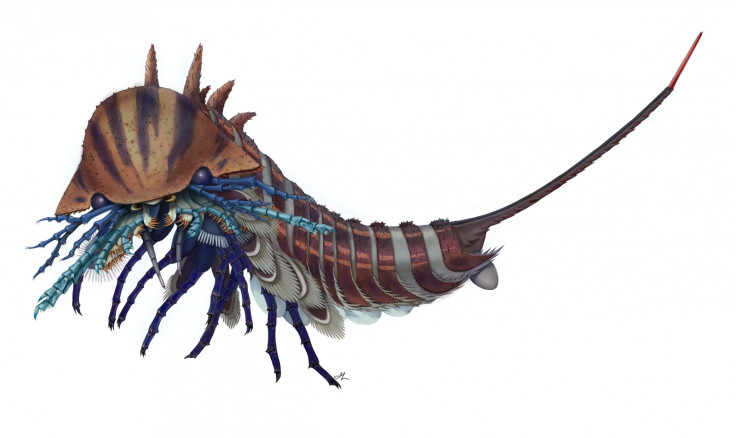This fierce 508-million-year-old sea predator evolved a sophisticated 'pocket-knife' head
The head of Habelia optata contained five strange appendages.

New research has revealed more details about a tiny but exceptionally fierce 508-million-year-old sea predator known as Habelia optata which has fascinated scientists since its discovery more than a century ago.
The long-extinct animal measured approximately 2cm in length and featured a segmented body with an external skeleton, jointed limbs and a long tail. It belongs to a group of animals called chelicerates, which in turn are part of a larger group called arthropods that includes spiders, insects and crustaceans.
For the study, published in the journal BMC Evolutionary Biology, scientists analysed 41 specimens of the animal.
They found that the well-armoured body of Habelia optata was divided into a head, a mid-section (thorax) and lower section (post-thorax) all of which were covered in a variety of different spines and appendages.
The thorax has five pairs of walking legs, while the post-thorax is connected to appendages that were likely used for respiration.
"Scorpions and the now-extinct sea scorpions are also chelicerates with bodies divided into three distinct regions," said Cédric Aria from the University of Toronto. "We think that these regions broadly correspond to those of Habelia. But a major difference is that scorpions and sea scorpions, like all chelicerates, literally 'walk on their heads,' while Habelia still had walking appendages in its thorax."
The researchers think that this peculiar difference in anatomy between Habelia and modern chelicerates led to the evolution of an especially complex head.
This head includes five strange appendages, including a large plate for chewing, a leg-like branch with stiff spines for grasping and a slender branch which enabled the animal to feel and sense its environment.
"This complex apparatus of appendages and jaws made Habelia an exceptionally fierce predator for its size," said Aria. "It was likely both very mobile and efficient in tearing apart its preys."
It most likely hunted small creatures with shells and other arthropods which were abundant in the oceans at the time.
Habelia lived during the so-called 'Cambrian explosion', a period of rapid evolutionary change where most of the major animal groups first emerged in the fossil record.





















